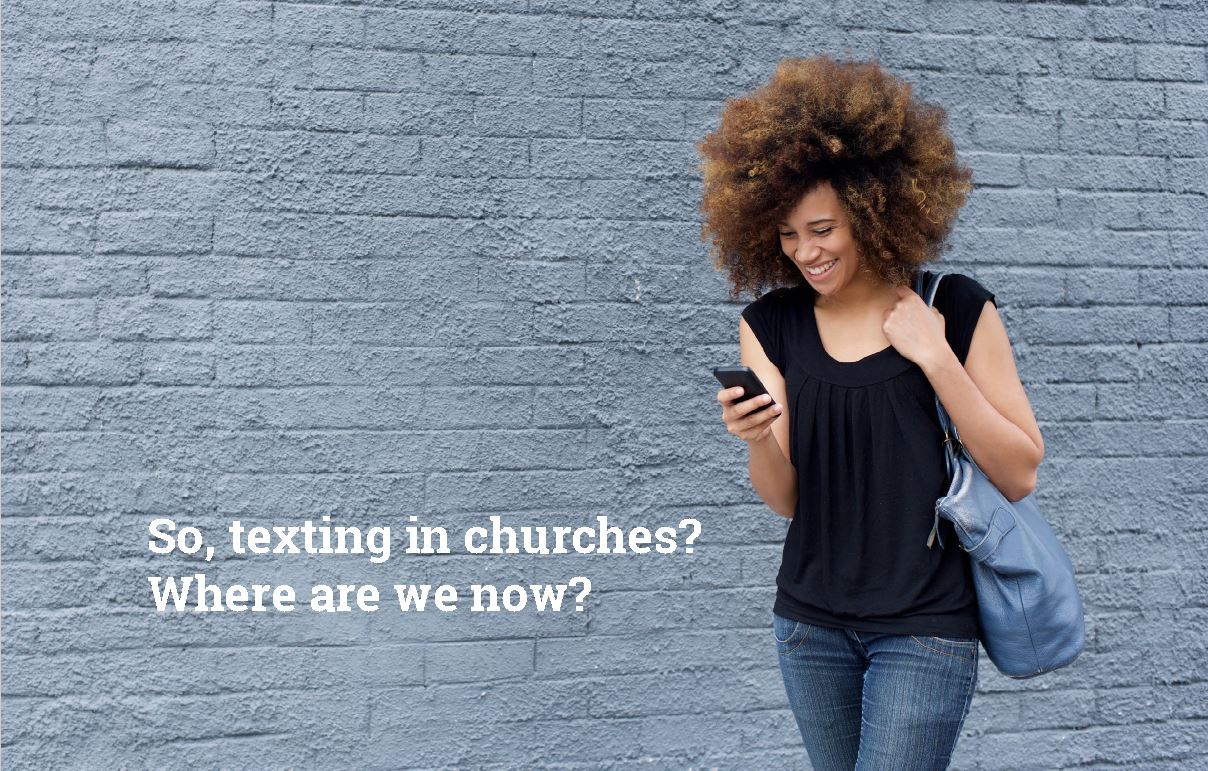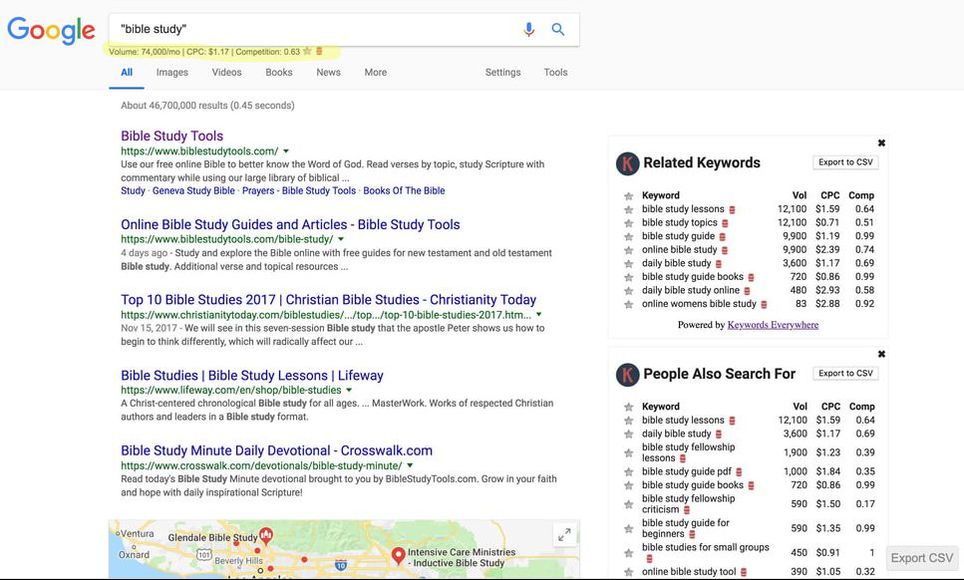Jason AlexisDigital Strategist for PastorsLine and co-author of reTHINK.Ministry. You've most likely hear A LOT about including text messaging as part of a church communications plan. Some of what you've heard is in favor of including texting and some is against. It can seem a bit confusing, and as a result of the confusion,
Add to that the fact that text messaging has matured which means the rules have changed, and users today are more choosy. If the texts they are receiving aren't relevant, chances are your users will unsubscribe from your texting service. Or just ignore you if you're sending them direct texts. Is including text in your digital strategy worth it?Mobile phones are the most used global communications device. Recent figures put the global figure for smart phone users at 2.6 billions ... and growing! In the U.S., 97% of people text one or more times every day. That means the number of texts sent by the average American is double the number of phone calls. In some groups, the texting rate is even higher. Each Millennial, on average, sends 2,022 texts each month. That's 67 texts each day. And people rush to answer their texts: Answering an email? 90 minutes on average. Answering a text? About 90 seconds! As a result, mobile devices are becoming the #1 choice for digital communications. Does your church have a mobile communications strategy?Many pastors, church leaders, and ministers face the same problem: how to quickly communicate important information to your entire congregation. The emergence of numerous digital, mobile, and online communication channels has created a wide variety of digital options and tools that you can use to get your messages out and cut through the clutter of daily life. When a message is sent, people are notified right away. Text messages are the most efficient solution if you are looking to get a brief message out to the majority of people. With a 97% open rate, it is worth the small cost for each message because you can be certain that nearly everyone who receives the message will read it. Phone or free app optionsWith text messaging services like Viber, Skype, iMessenger, Google hangouts, WhatsApp, GroupMe, kik, etc. available for free use, why would you need anything else? For example, both GroupMe and WhatsApp are applications for a smartphone, but have a limited number of features. The application GroupMe allows you to create groups on your mobile device so you can send the same message to a group of people. You are able to add everyone within your address book to the GroupMe application which allows all messages sent in response to a group message to be propagated to the rest of the group. The application creates what is known a private chat room. The WhatsApp application works in much the same way, but each user must have the application installed on the mobile device they will be using for sending the messages. These are applications that can be downloaded and used on mobile devices work well for small groups, but are not suitable for use with large groups. Cloud-based applicationsAPI (Application Program Interface) is a way in which vendors can allow apps written in different languages to talk to each other. These apps can talk together because they are connected by what is called ‘the cloud’ (a communications network). Phones usually don’t allow you to extend your SMS application that way unless you hack themneither scalable OR legal! Other free apps such as Skype and WhatsApp are niche networks. They prefer you to use their apps and their solutions so they are not interested in integrating either. The advantage of using cloud-based text solutions is that they are built on architectures that allow you to extend the application and integrate with other tools that you are using. This means churches or the vendors can build integrations with other vendors such as MailChimp; hence, ensuring they can roll out a streamlined digital strategy. A digital strategy that is fully integrated, in which all your systems (or most of them) are speaking to each other, can be worth the expense of using a cloud solution versus just your phone or some free app. What are short and long codes?Members and visitors must opt-in to be able to receive messages sent by service providers. To do this, most service providers use what are called short codes or long codes. A short code is a number to which an SMS, or text message, can be sent. The code is usually five or six digits in length, making it easy for people to remember. For example, a short code could be 54321. A short code may be specific to one mobile operator or “common” and supported by all major mobile operators. A long code is a 10-digit telephone number. Short Codes +/- Although usually more expensive, short codes (being short) are easier to remember. Also, you can send large volumes of messages without being flagged by the cell phone carrier. For example, it is possible to send 1 million messages within 5-10 seconds. Short codes are great for opt-ins during conferences, large evangelistic events, and in larger churches because they give people a quick, easy way to connect with what’s happening at the moment. However, due to their power, there are many more TCPA (Telephone Consumer Protection Act) restrictions governing how you can opt people in (usually only favors self opt-ins vs. manual). Also, once a person unsubscribes from that one shared number, they have essentially unsubscribed from everything. E.g. Using this shared short code across a multicampus? This means they would be removed from all communication across your campus as well. At least, this is what short code providers are legally meant to do. Long Codes +/- Long codes have a lower barrier of entry because they are more familiar to people. After all, long codes are just like regular telephone numbers, complete with local area codes. Also, long codes generally offer easier options to build your contact list. Plus, manually adding names is ok. Long codes are used for the continuing relationship for three important reasons:
On the other hand, the length of the long code has a higher barrier of participation. For example, it is not as easy to say as the short code. As a result, it can be difficult for the church to sell a longer code to a crowd who may be distracted by what’s happening in the conference, concert, or other major event. In other words, the end user in that crowd might feel like it is a hassle or too much to actually do in order to participate. How to choose between short codes and long codesThe type of relationship you want to create determines the choice. Short codes feel more controlled, more professional. Users don’t feel they are giving some random, unknown person their phone number. So, short codes suit large, anonymous situations such as public events and business campaigns. A recent use by a larger church was a wavechurch.com campaign. Wavechurch used a short code at their main service to encourage thousands of people to join their small groups. In addition to services, short code opt-ins suit large musical church events. Long codes, on the other hand, are much more personal. The church can say, “Here’s our pastor’s number which is set up for both calls and text.” This creates the feeling that the user is getting direct contact to the church team since the user needs to give their cell phone number. For most churches, the number of first-time guests tends to be low—usually 5 - 10% or fewer of the church membership AND these first-time guests are familiar with the church or someone connected with it. In these situations, the long code does not have the same stigma but actually aids in building a healthy, communicative relationship from the start. What else you should look forHere are some other things you need to consider when looking at cloud-based text messaging provider.
Be proactive by going to the company website to check out how active they are and if they are providing value. Are there any case studies? What about social media activity and blogging? What about the company’s attention to best practices? Is the system church-focused? If the company is familiar with the church niche, they will most likely have relationships with other church vendors (programs, apps, etc.) which you are already using. Also, they will understand church culture which is usually going to mean that their solution and process reflect common values. Speaking of integrating, does this company offer an API? If not, does it at least integrate with your current app vendors? Adding a digital tool that doesn’t fit into your digital tool kit just doesn’t make good sense. Can you try it out easily, contract-free? Really, there is no reason why a reputable company is not able to let you try out their system with no obligation. Avoid contracts where you have to sign up for a year. Also dubious are trial options which ask for a small cost to cover the purchase of the phone number. If you are really sold on a ‘pay first’ system, speak to a salesperson before signing up in order to see as much of the system as possible. To help you with your research and next steps, download this free guide. Resources: Center for Online EvangelismThe Center for Online Evangelism is a missionary project devoted to developing online mission stations. Every follower of Jesus Christ is called to be a missionary.For many of us, when we hear the term “missionary,” we imagine traveling to a third-world country, living without the usual comforts of home, learning a tongue-curling language, and fighting an epic battle against mosquitoes. But that is not the only form of mission work. Mission work is the act of intentionally sharing the Gospel of Jesus Christ. This means that we can use everyday devices like our laptops, smartphones, tablets, and cameras to help someone know of the hope that we have. If you want to be a missionary online but you’re not sure how to go about getting started, here are five important steps to help you: Step 1: Write down your project and stick to it.Your project is a God-given assignment – a task that the Holy Spirit will equip you to complete. Your project or mission work will be based on your gifts, talents, skill set, and experience. But, don’t try to do everything. Examples of mission projects:
The object of online evangelism and mission work is to reach people online and share content that will encourage, inspire, and point them to Christ. We may speak words of encouragement to those whom we meet. “A word spoken in season, how good is it!” Souls are perishing for the lack of personal labor.– E.G. White, Letter 151, 1903. Step 2: Register as an online missionary.Being a part of the Database for Online Missionaries will connect you with other digital disciples and online workers. This database can provide a support system and give you access to resources that could help you serve more effectively. The Center for Online Evangelism is creating a directory for online missionaries. Individuals who intentionally use the internet to share the Gospel are invited to sign up for the directory. Donors and mission supporters can also view this database and back a project. To register, email [email protected] with the subject line "Register for Online Missionary Database." When Jesus had called the Twelve together, he gave them power and authority to drive out all demons and to cure diseases, and he sent them out to proclaim the kingdom of God and to heal the sick: Luke 9: 1,2 NIV Step 3: Choose a prayer partner and prayYour prayer partner will be the person who believes in what God called you to do and they are willing to stand in the gap for you. This is the friend or relative who will pray with you regularly and encourage you when you are tempted to give up. Praying is the highest work of a missionary. It is not a means to an end but the end of our work because it brings us directly in contact with God. Prayer equips us with the strength needed to do the task given by God. A prayer partner helps us formulate specific prayers and plays a crucial role building on our holy faith. As we make Christ our daily companion we shall feel that the powers of an unseen world are all around us, and by looking unto Jesus we shall become assimilated to His image (Pr. 82.1). Step 4: Create a content strategyIt’s important to have a plan. That plan comes in the form of a content strategy. A content strategy is like creating a blueprint or a map for your work. This documented plan encompasses the planning, creation, publishing, distribution, and management (of feedback) of your content. It also includes:
Download a guide to Digital Evangelism for Ministries. Step 5: Improve your skillsWhether you will be writing a blog, producing videos, preaching, or recording a podcast, you need resources that will help you get better at what you do. Assuming that you know it all hinders the work of the Holy Spirit in you. Here are a few things you can do to enhance your proficiencies:
ConclusionBy taking these simple steps, you can be on your way to starting your work as an online missionary. Remember, this is not like a class project or a hobby; this is a sacred work and should be regarded as such.
If you bear in mind the magnitude of your mission task and the significance of sticking with it, you will find that you won’t easily give up during trying moments. Christ commissioned you to do this work. He will also empower you and provide the means to be successful. Sometimes, online mission work can get out of control. Read this article about how digital missionaries can balance online work and spiritual health. Are you interested in being an online missionary? Email [email protected] to register for our Online Missionaries Database. Reposted with permission from centerforonlineevangelism.org. Jamie Jean Schneider DommDigital Strategist for the North American Division. Erica JonesAssistant Director of Women's Ministries for the North American Division Jamie Domm: Growing up in the 80’s and 90’s, bullies were confined to school hours and playgrounds. As a “funny” but quiet girl in a very small town, I found myself the subject of laughter and bullying more often than I care to remember. But I always knew that at the end of the day, I could go home. Home was my sanctuary, full of books that stretched my imagination to faraway lands, and loving parents who encouraged my “peculiarities.” Times have changed. Kids are connected 24/7 and have the potential to have their entire lives recorded and documented online: the good, the bad, and the humiliating. They’re not only connected to their friends via texting, social media, and email; they are also reachable by their bullies, anywhere, anytime. In my day, girls would whisper behind your back, write mean things on scraps of paper and stuff them into your locker, or just obviously exclude you. Yes, it hurt, but it also shaped my character, my compassion for others, and my sense of fairness. It drove me out of my small town to go to college, explore the world, and find a new life full of “funny girls” just like me. I don’t remember the nasty words spoken by mean-spirited children. In a strange way, I can thank my bullies for helping me become who I am today. But the digital world has ushered in a new type of bullying, one that is far more damaging than school yard pranks and being made to feel like you don’t belong. Cyberbullies can make a self-conscious child or teenager’s life a living nightmare. They can be dogged constantly with mean, spiteful, malicious messages that tear apart their self-worth and identity—and everyone else can see it too. Children can easily begin struggling with suicidal thoughts caused by an endless barrage of insults sent to them right under your nose. As a teen, I remember jumping into the lake where my family lived and my top came off; I ended up hiding under the deck until one of the neighbors was kind enough to fetch it for me. Everyone had a good laugh and teased me a bit, but by the next week it was over and forgotten. Fast forward to today: something similarly embarrassing happens but this time someone snaps a picture and texts it immediately to all of their friends and sends it out on Snapchat for others to take screenshots and share. In a matter of minutes, the moment is immortalized. This has happened many times—someone snaps an embarrassing picture on Friday, and by Monday the entire school knows. The victim is mocked, shamed, and humiliated again and again and again. It never ends, and the reach keeps expanding. The victim may feel the only way out is to take his or her own life. What can we do? Morally, as Christians, we should have a no tolerance policy on bullying of any kind. As youth leaders, parents, and teachers, we need to recognize the signs and know how to handle these situations when they appear. Being part of a church does not make anyone immune, but together we can make it a safe place for our youth. The North American Division is dedicated to preventing abuse of any kind. Consequently, it has launched the enditnownorthamerica.org campaign to provide education and resources to church leaders, educators, and members. Erica Jones, Assistant Director of Women’s Ministries will now share some practical tips and resources for identifying and addressing cyberbullying.As a parent or youth leader, one of the most important things you can do to protect your kids is to be aware of any significant changes to their mood and attitudes. Be aware of common warning signs:
Kids need to feel that they have a safe space to talk to a trusted adult. Ask them open-ended questions about school and friends. If you see a change, don’t ignore it or chalk it up to them being “moody teenagers.” Ask–don’t assume! Kids and teens want to know that someone cares enough to ask why they don’t seem themselves.
Additional resources on cyberbullying:
Jamie Jean Schneider DommDigital Strategist for the North American Division. Amy PrindleThe Center for Online Evangelism is a missionary project devoted to developing online mission stations. This blog post is part of a SEO series created through a collaborative partnership between the Social Media + Big Data department of the North American Division and the Center for Online Evangelism. Whether you’re a conference, union, church, a school, a regional office, a service organization, or a retailer, you may be asking: What is SEO, and what does it have to do with my ministry?One way to understand SEO is to think of the internet as a traditional library, but bigger. All the world’s content is in this library. To find material on a certain topic, you don’t just wander through each aisle. This is a large, multi-story building with shelves from floor to ceiling. If you want to find what you need, and fast, you ask the librarian: Google. You approach Google: “I need snow leopard information.” With that, Google brings you stacks of books. There are travel magazines about zoos that have snow leopards, kids’ picture books of snow leopards, decor magazines about snow-leopard-print area rugs, reference books on animal facts, a few encyclopedias, some National Geographics, and some support manuals for Apple OS X Snow Leopard. You’re overwhelmed, so you say, “Actually, I just want to know where snow leopards live.” Google whisks the previous stack away and returns with a smaller stack of literature. You pick the first book off top, quickly scan through, and find, “Ah—they live in the mountains of Central Asia.” Done. And you only needed to look at the first few pages of the top book. The goal of Google’s search engine is to give searchers exactly what they’re looking for. If it didn’t do that very well, people wouldn’t use their search engine. Google acts as the Great Virtual Librarian, seeking content that is most relevant to what was typed in the search box. The more specific the search query, the more specific the search results. On the other hand, if an author wants their book to make the librarian’s short list for a certain topic, they must demonstrate to the librarian that, for a certain topic, their book is the best match or contains the most reliable information. An author might do this by designing a catchy cover. They might also make the book title contain words that are often used when people ask questions about this topic. They write a subtitle that further specifies what readers will learn, and they craft the back-cover copy as a teaser to draw the reader in. They also have someone write an author bio that positions that author as an expert in the field. The author will also seek to get on bestseller lists, be quoted in various magazines, and even get recommended by other authors. Maybe this author will write forewords to other books and have other prolific authors write the foreword in theirs. The author will be posting ads, participating in interviews, doing readings, etc. The author creates a credible “buzz” and elevates this book as relevant for its topic. The librarian sees all this and brings this book to all readers asking about this topic. And if the library patrons willingly receive it, or even come back to read it again, all the more reason to keep bringing out this book for queries on this topic. The author catered to the librarian by catering to what the readers were looking for. Keep this analogy in mind as we go through this series. Each of those elements represent an online process involved in search engine optimization and, ultimately, the success of your web presence. SEO is all about helping the right people in the “online mission field” find YOUR ministry. There are people out there that are searching for what is already your specialty—a cooking class, a good private school, a small friendly church, a big friendly church, a health seminar, an online Bible study, information about a perplexing Bible verse, how to deal with peer pressure, or how to find help and support when your friends and family aren’t helpful. You may have heard the term “SEO” or “Search Engine Optimization” if you work with websites, content management, social media, or web development. It’s a catch-all term to describe a collection of efforts to make your web presence more prominent in search results after someone types a related phrase into a search engine (most likely Google, but some use Bing, Yahoo, etc.) Because it’s such a widely-applied and ever-evolving process, SEO does not have a set definition in a dictionary—it has several definitions! The most important thing to keep in mind, however, is that: SEO is all about people—their behaviors and preferences—and not just search engines. It’s about your target audience’s needs, desires, and questions, and learning how you can best make the connection so they realize that, yes, you can provide what they need. You are worth their time. Then they either buy from you, subscribe to your content, follow you on social media, join your cause, or come to your event or location (all possible calls-to-action—which will be studied later in this series!). SEO combines some technical work with creative, strategic content work. Often, a complete SEO project involves an SEO specialist, a content strategist (copywriter), and a web developer. However, there are several SEO best practices you can implement yourself as a content manager, communication director, webmaster, or tech-savvy volunteer. The process of SEO can have a big effect on your ministry’s online presence, whether your audience is local or global. SEO is so big in the business world that there is an overabundance of tools and techniques being pushed by various “authorities” in the industry. It can be an overwhelming field to try to learn and keep up with, and it’s often difficult to know who to trust. Even experienced specialists in this industry still find it challenging. That’s why this guide was created to help you through SEO fundamentals, step-by-step, to make sure our Church’s ministries do not miss out on these potentially far-reaching benefits. Click here for the full SEO series and resource guide. External Articles:
External Resources: Jamie Jean Schneider DommDigital Strategist for the North American Division. Amy PrindleThe Center for Online Evangelism is a missionary project devoted to developing online mission stations.  Search Engine Optimization, Online Marketing, Content Strategy, Big Data…why should the Seventh-day Adventist Church prioritize these digital strategies and tools?Most of the world spends hours online each day. Many people have become addicted to research, googling anything they have a question about. They look for maps and location information, check product reviews, read articles, watch videos, post comments, check in with old friends...they’ll even google questions close to their heart—questions they don’t feel comfortable asking close friends or family. Many people may google questions about topics such as spirituality, health, or information to help them through an inner struggle. To be specific, 74,000 people google “Bible study” each month. That’s almost the entire population of Scranton, Pennsylvania. The name “Jesus” is googled 1,500,000 times a month, and “Adventist” 18,100 times a month. This is a huge ministry opportunity—if Adventist websites can rank high in the search results Google displays for these search terms. |
Archives
August 2020
Categories
All
|
- Home
- BLOG
-
RESOURCES
-
RESOURCE MENU
>
- ADVENTIST IDENTITY GUIDELINES
- BIG DATA RESOURCES
- BRANDING, IMAGE & DESIGN RESOURCES
- CHURCH/MINISTRY SPECIFIC RESOURCES
- COPYRIGHT & TRADEMARK BASICS
- COURSES
- EMAIL RESOURCES
- GUIDANCE FOR HIRING SOCIAL MEDIA POSITIONS
- PODCASTS
- REPORTS & CASE STUDIES
- SOCIAL MEDIA RESOURCES
- (SOCIAL) VIDEO RESOURCES >
- TEXTING 4 CHURCHES
- TRACKING & ANALTYICS
- WATCH VIDEOS & TUTORIALS
- WEBSITE TIPS
- SOCIAL MEDIA GUIDELINES
-
RESOURCE MENU
>
- SEO
- Digital Discipleship & Evangelism
- COVID-19 RESOURCES
- eNEWSLETTER









 RSS Feed
RSS Feed